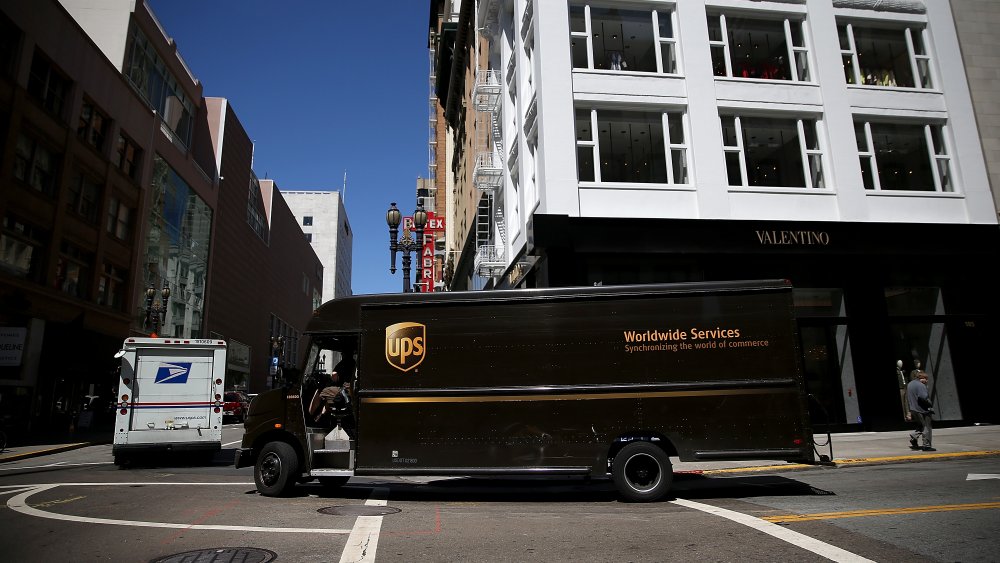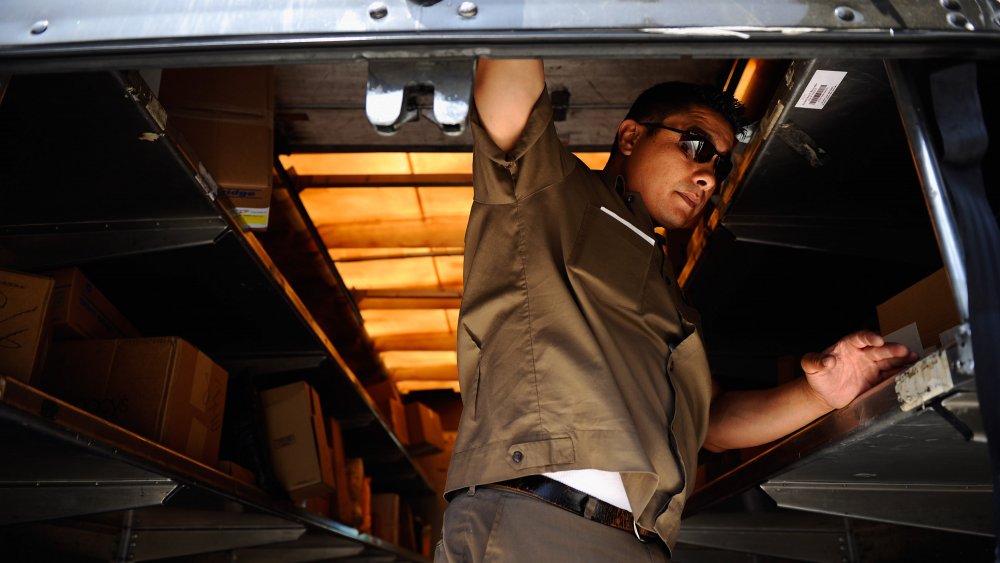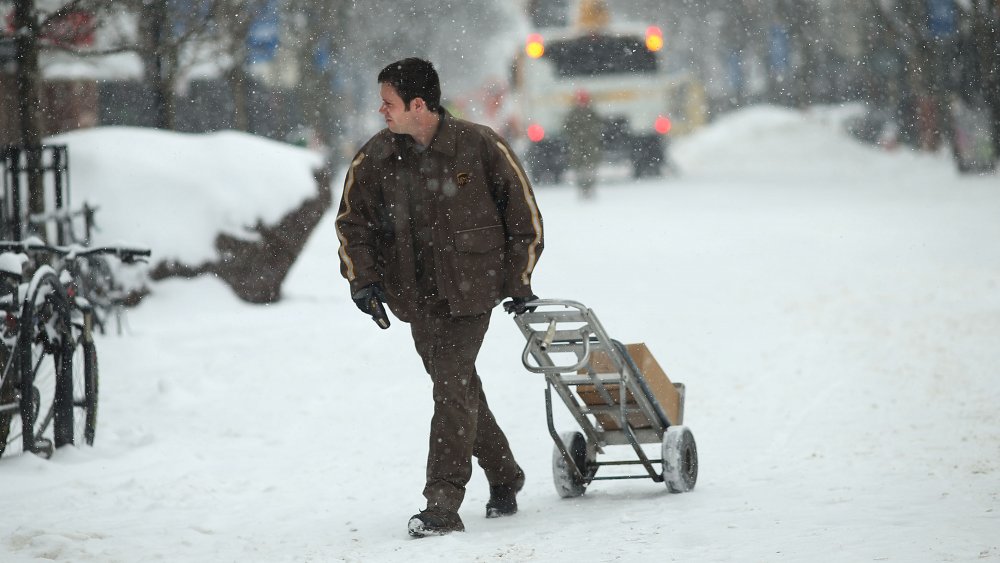The Truth About UPS Boot Camp
United Parcel Service — UPS — also ubiquitous. They're everywhere, especially lately, with a massive upsurge in deliveries in the first half of 2020. The company boasts nearly a half-million employees globally, according to its website. Bear in mind that the company also has its own airlines, retail/shipping stores, freight, and more. So the question naturally arises: How many people are actually piloting those iconic brown step vans throughout our neighborhoods? And since the kids and just about everybody else is home these days, just how good are they?
Fair questions. Easy answer first: According to Business Insider, more than 129,000 individuals are presently engaged as UPS delivery drivers, in getting your stuff to you, safely and in a timely fashion. Mental Floss relates that UPS delivers more than 15 million packages a day around the world, including, yes, the North Pole. "Some are born great, some achieve greatness, and some have greatness thrust upon 'em," said Shakespeare. Whether that greatness is actually thrust or not, UPS drivers are encouraged and trained to be nothing less than great. And that means boot camp.
Delivery drivers are taught to expect the unexpected
The program, for both new delivery drivers and aspiring supervisors, is called Integrad. It lasts anywhere from 5-9 days, depending on the training involved. It's conducted at sites across the United States, and like any good boot camp, it tries to think of everything. First emphasis is safety: for the drivers, for those with whom they share the roads. Said Kara Murphy, manager of an Integrad school in Massachusetts, "I can safely say that the delivery methods and the driving methods that we use and teach here have completely changed my life." The facts speak for themselves: over 10,000 UPS drivers have completed more than 25 years without an accident, and hundreds have passed the 35 year mark.
The workers practice delivering, using boxes containing cinder blocks to mimic actual packages. Trainees experience a device that mimics hazardous walking conditions — think about carrying a heavy, awkward box as you walk across ice. The answer? Walk like a penguin: bend the knees slightly, keep your feet only a couple of inches apart, take slow steps. UPS has even brought in live penguins to demonstrate.
They learn to deliver on ice
Delivery personnel are taught a maxim: "Safe by choice, not by chance." They're taught wellness and muscle care, including safe procedures for entering and exiting a vehicle: three points of contact at all times — two hands and one foot, two feet and one hand, reducing the risk of falls and physical stress as they complete an average delivery day with 150 stops. They're taught a defensive driving drill that includes 45 eye movements within two minutes — two forward, one to the rear, so that the driver's eyes are never away from his forward view for more than two seconds at a time.
Intense? Of course. It has to be. As Kara Murphy explained, "It's so important because you can't just have somebody that comes off the street just jump into a vehicle and go and deliver where your kids are playing. I want to know that the drivers that go out are doing the right things."
"Be prepared," they're taught. "Expect the unexpected." Like, maybe, the two whales UPS shipped from Taiwan to Atlanta in 2007.


